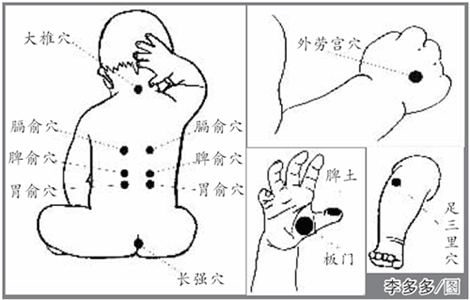The massage in Chinese medicine is called Tuina in Chinese. The word "tui" means to push and "na" means to grasp. This word designates the two main movements of Tuina. Tuina should be differentiated from the relaxing massage, which is designated in Chinese by the term Anmo, which previously was also the name of the therapeutic massage Tuina.
The goal of Tuina is to mobilize painful joints and also to restore balance in the patient's body, just like acupuncture, herbal medicine, dietetics, or qigong. To achieve this, the Tuina practitioner uses pressure, pinching, stretching, etc., to release blockages in the meridians, tonify the organs, and circulate the blood.
Tuina is often practiced on children who are too young for acupuncture or herbal medicine. They are very responsive, and the results are generally excellent.

Tuina uses techniques that require long training. This training begins on a bag of rice and lasts on average one year by practicing daily. These techniques involve the entire body. The practitioner of Chinese martial arts generally finds movements and principles similar to Kung Fu.
The techniques differ depending on the schools, but generally, the following eight are found: pressing, rubbing, pushing, grasping, kneading, pinching, vibrating, and striking. These eight methods are not used independently of each other but jointly according to the desired result.
